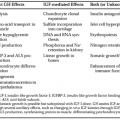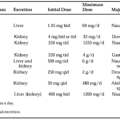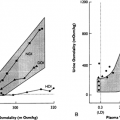REGULATION OF THE GROWTH HORMONE RECEPTOR AND BINDING PROTEIN
For reasons of accessibility, little is known about the regulation of GHRs in human tissues. Therefore, much of the information about GHR regulation is based on (a) animal studies and (b) GHBP measurements in humans, using the GHBP as a surrogate for the GHR. Based on the comparison between direct GHR data in animals and GHBP data in humans, the GHBP level in serum appears to be a reasonable index of GHR abundance in tissues, primarily the liver.
The main regulator of GHR/GHBP abundance is ontogeny. In fetal and neonatal life, GHR expression is very low, and serum GHBP levels are correspondingly low. This is a physiologic GH-resistant condition, with high GH and low IGF-I levels. Postnatally a rapid up-regulation of the GHR and GHBP occurs, coincident with the emergence of GH responsivity.25 This process continues throughout childhood, until in the late teens GHBP levels (and presumably GHR levels) reach adult levels. GHBP levels remain constant through adult life until approximately age 60, when a progressive decline ensues that continues until the tenth decade.26 This decline is accompanied by a decline in IGF-I levels and constitutes part of the somatopause. Thus, in old age the changes caused by the decreasing GH secretion are further amplified by the development of GH resistance. Similar changes in GHR expression have been shown in aging animals. Women of reproductive age have slightly higher GHBP levels than men.
Stay updated, free articles. Join our Telegram channel

Full access? Get Clinical Tree








